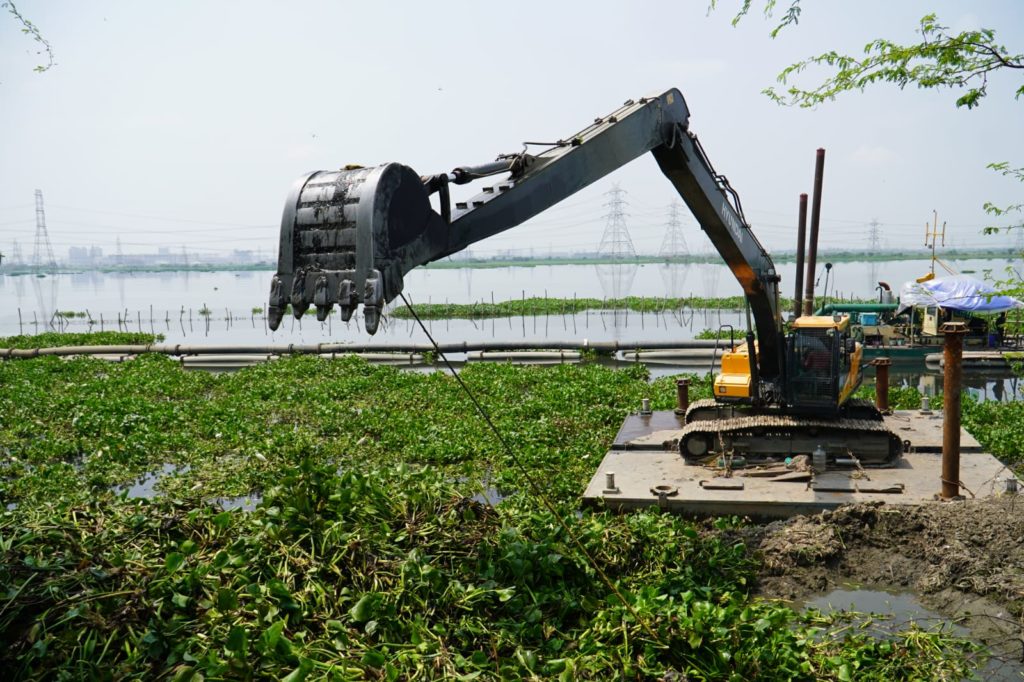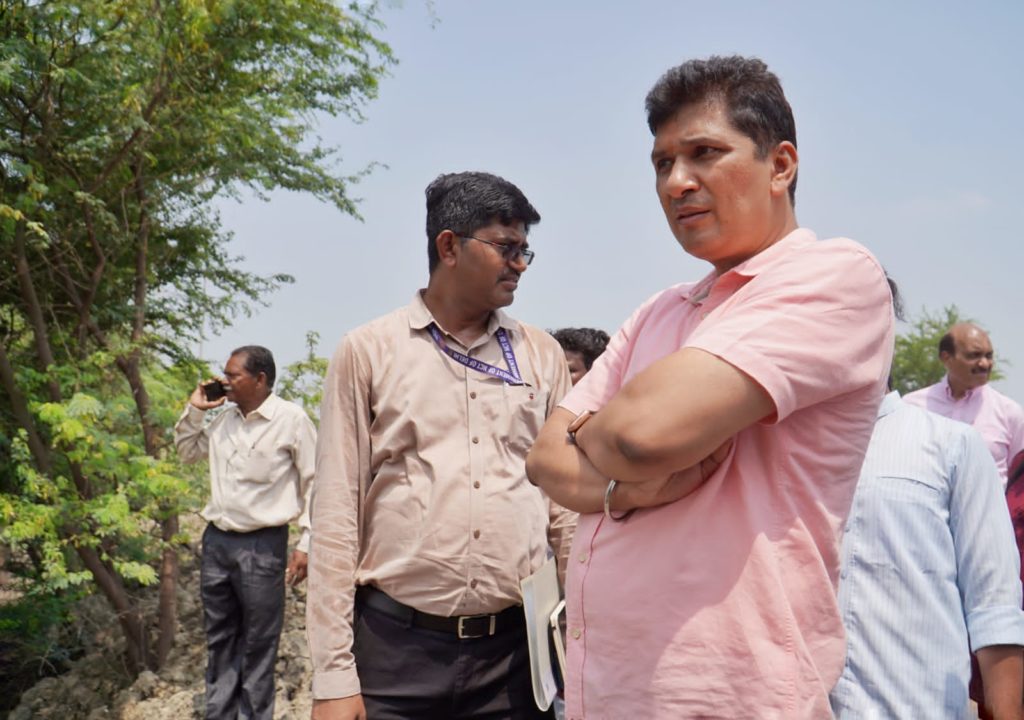The Kejriwal government is working on a war footing to clean the Yamuna in Delhi by 2025. To clean any big river, it is necessary to clean its drains and tributaries. In such a situation, several initiatives have been taken by the Delhi government under the leadership of Chief Minister Shri Arvind Kejriwal to improve the quality of water in the drains falling into the Yamuna.
In this vein, Water Minister Shri Saurabh Bhardwaj arrived today to inspect the cleaning of the Najafgarh drain. During this, he inspected the work of desilting as well as the hydraulic excavator installed on Pantul bridge. He directed the officials to ensure that only treated sewage is released into the Yamuna. The Water Minister also stressed on solving the problem of water conservation through recharging ground water.
The Kejriwal government is also engaged in the removal of wild plants such as water hyacinths on a large scale. During the inspection, Shri Saurabh Bhardwaj appreciated that the desilting of the Najafgarh drain is being done on a large scale. The cost of this project is Rs 11.2 crore. At the same time, to remove the hump in Najafgarh drain, silt is being removed by the government through a project costing Rs 20.8 crore. The same is also being done from Khyala Bridge to Basaidarapur Bridge which will cost the government Rs 13.9 crore. In many places, tons of silt is being removed from the drain and dried. Apart from this, very large wild plants are also being removed from the hydraulic excavator installed on the Pantul bridge. The work of removing wild plants such as Water Hyacinths (Jal Kumbhi) is going on on a large scale.
Minister Shri Saurabh Bhardwaj shared that water hyacinths are a very dangerous species of plant. These can remove the amount of oxygen from the water, due to which the water can become stagnant and unusable. Generally, if the amount of oxygen in the water is adequate, then it itself starts the process of cleaning the water. That is why the Delhi government is working doubly hard to remove water hyacinths from Najafgarh drain and many other such drains.
Silt is being removed from the drain on a large scale as well, so that the flow of the drain can be sped up and the water present in the drain can add to the process of self-cleaning.
It is worth mentioning that a few decades ago, the Najafgarh drain was called Sahibi river. But due to urbanisation, sewer and industrial waste of many cities of Haryana became mixed with the Najafgarh lake in the form of Badshahpur and Dharmapura drains. After this, Sahibi river turned from a river into a drain.
Furthermore, the manner in which settlement has taken place in the capital in the last several decades has led to the formation of thousands of unauthorized colonies in Delhi. The sewer and industrial waste of these colonies and industrial clusters started falling into Najafgarh’s drain through small drains. In such a situation, one of the major reasons behind the contamination of the Yamuna river is the sewer and industrial waste coming into the river through the Najafgarh drain. Taking steps in this direction, the Kejriwal government is cleaning all the big and small drains falling into the Najafgarh drain.
By converting the Najafgarh drain into a clean water channel, clean water will reach the Yamuna. Cabinet Minister Shri Saurabh Bhardwaj said that all major drains including the Najafgarh drain are being reconverted into clean water channels by the Kejriwal government. Delhi Jal Board is treating the water of dozens of drains falling into Najafgarh drain through its various STPs and DSTPs. The cleaning of Najafgarh drain will improve water flow. Along with this, the outbreak of mosquitoes will also reduce, due to which the public will witness relief from mosquito-borne diseases such as dengue and malaria.
After removing the hump in the drain, the discharge of water will reach the Yamuna more quickly than before. He added that in the last few years, Chief Minister Shri Arvind Kejriwal has reserved thousands of crores of rupees in every budget of the government, especially for the cleaning of Yamuna river. The result of this is that today small drains falling into big drains within Delhi are being treated in sewer treatment plants, so that sewage and filth does not directly reach Yamuna river and only clean water is transported to the river.
Chief Minister Shri Arvind Kejriwal has set a target of cleaning the Yamuna by 2025. The Yamuna Cleaning Cell was formed under the direction of Shri Arvind Kejriwal to ensure better coordination and an integrated approach in order to achieve the objective of cleaning the Yamuna. Yamuna Cleaning Cell has been working on construction of new STP, DSTP, upgradation of existing STP up to 10/10 and capacity enhancement, laying of sewerage network in unauthorised colonies, septage management; desilting of trunk/peripheral sewer lines, providing sewer connections in pre-notified areas, trapping of drains under ISP, in-situ treatment of drains etc..



